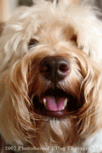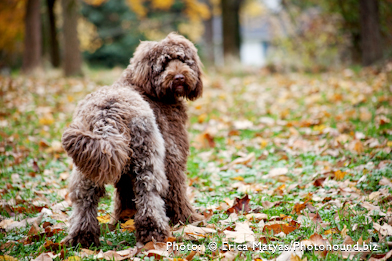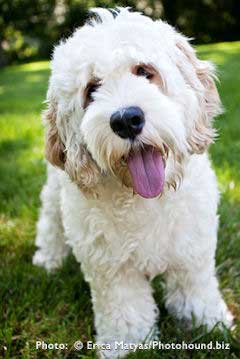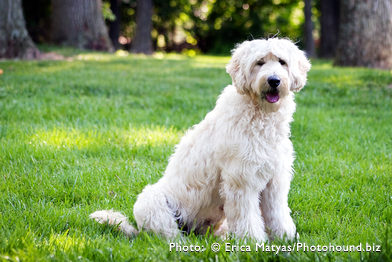Labradoodle Types

Click below to find more information on our Labradoodle puppies.
Types of Labradoodles F1, F1B, Multigen Labradoodle
What type of labradoodle or Australian Labradoodle? 
Labradoodles and Australian Labradoodles can be very different depending on the type (resulting from the parents and grandparents). It is very important to understand the type and pedigree of your labradoodle or Australian Labradoodle! Just breeding a poodle to a lab or labradoodle to a labradoodle does not make a quality pet!
There are breeders that focus on Australian to Australian Labradoodle or Poodle only plus the generation of the dogs. On the flip side those breeders that focus on the dogs and breeding to the breed standard. We breed to the breed standard. We do have original or true Australian Labradoodles in our lines but only those pedigree lines we trust based on DNA for breed testing and health testing. We only breed for the soft fleece coat, stellar temperament and health. We do not inbreed. For more information on what is going on with the "true" Australian Labradoodle lines click here http://stoprutlandmanor.wordpress.com/. In our opinion the Australian Labradoodle is still under development and requires generations of careful selection and breeding, this to us is what "creates" a breed from a mixed breed, not the name of a few dogs in a pedigree. We do agree that some Australian Labradoodles from Australia are exceptional dogs and we use those dogs to further our lines.
There are two ways to describe Labradoodles (Lab/ poodle only crosses) and Australian Labradoodles (lab/ poodle/ spaniel crosses).
- Physically by coat type: using the terms Hair coated Labradoodle, Fleece Coated Labradoodle, Wool coated Labradoodle, Fleece Coated Australian Labradoodle, Wool Coated Australian Labradoodle
- OR based on Pedigree descriptions: First Generation Labradoodle (f1) or Second Generation Labradoodle (F1B) or Multigeneration Labradoodle or Multigeneration Australian Labradoodle
- Wool Coat: Resulting from a Purebred Poodle (soft harsh texture)
- Wool Coated Australian Labradoodle (soft or harsh texture)**** OR Wool Coated Multigen Labradoodle (harsh texture)*** OR Wool Coated F1B Labradoodle (harsh texture) **
- Wool/Fleece Coated Australian Labradoodle (soft or harsh texture)**** OR Wool/Fleece Coated Multigen Labradoodle (harsh texture)*** OR Wool/Fleece Coated F1B Labradoodle (harsh texture) **
- Fleece Coated Australian Labradoodle (soft silky texture)**** OR Fleece Coated Multigen Labradoodle (soft texture)*** OR Fleece Coated F1B Labradoodle (soft texture)**
- Fleece/Hair Coated F1 Labradoodle (harsh texture)* OR Fleece/Hair Coated F1B Labradoodle (harsh texture)**
- Hair Coated F1 Labradoodle* sometimes Hair Coated F1B Labradoodle **
- Hair Coat: Labrador Retriever
*First Generation Labradoodle:
50% poodle, 50% lab,mild to light shedding, sometimes but rarely no shedding. First Generation Labradoodles have wispy coats long 5" or short 2" in length, wiry or harsher fleece in texture, while basically straight in wave. Typically, First generation Labradoodles have the great labradoodle intelligence with higher "lab like" energy and drive. Shedding amount is difficult to determine at a young age. Only experience breeders with double champion quality coated poodles can maintain quality coat results, and this is rare. First Generation looks more like "Benji" the movie dog. First generation Labradoodles are of excellent temperament and health if the parents are of the same quality. A great choice for the family who doesn't mind some shedding, high energy, the First generation Labradoodle look and have no dog related allergies.**Second Generation Labradoodle:
(First Generation bred to another poodle, some refer to this as F1B labradoodle) about 75% poodle 25% lab, may be true to the labradoodle standard in physical appearance, more consistently non-shedding (about 80%). The texture ranges from fleece to wool and the wave ranges from straight to wavy. Second Generation Labradoodles typically have the great Labradoodle temperament, intelligence, and laid back nature, if the parents are of equal quality. Some can be a good choice for families looking for a non-shedding dog and or have allergies to the hair, wiry coat and dander of many dogs, remember only about 80% are non shedding and allergy friendly. Top breeders of Second Generation Labradoodles can select First generation labradoodles and Poodles that will produce consistent offspring and the desired fleece coat. Although sometimes, not desired, a second generation can have a hair coat; these must be breed to a wool coated multigen or again to a poodle.
***Third Generation or higher Labradoodle:
(Second gen to second gen or second gen to poodle) about 75%-85% poodle 15%-25% lab, may be true to the labradoodle standard in physical appearance, consistently non-shedding. The texture ranges from fleece to wool and the wave ranges from wavy to curly. It is important to maintain the wider body type and shorter muzzle length. As breeders at this stage are typically selecting the best second generation to breed to other second generation the offspring are more consistent. The fleece coat is nice but still not as silky as the fleece coat of the Australian Labradoodle.****Australian Labradoodle:
Should be originally either Second Generation Labradoodle or higher generation bred to an Australian Labradoodle OR Australian Labradoodle to Australian Labradoodle through generations, sometimes called Multigen or Multigenerational OR somehow a mixture of Poodle, Cocker Spaniel (American or English), and Labrador Retriever. Coat texture is either silky fleece (preferred) or soft spiraling wool and sometimes you can get variations on the wave from straight to curly. The goal is to achieve the true Australian Labradoodle look, temperament, coat and conformation. True to the Australian Labradoodle standard in physical appearance, and pedigree, consistently non-shedding fleece sheepdog like coat, dander free. Great Australian Labradoodle temperament, intelligence, and laid back nature, if the parents are of equal quality. Also best choice for families looking for a non-shedding dog and or have allergies to the hair wiry coat and dander of most dogs.
What is the difference between a Labradoodle and an Australian Labradoodle?
My focus has always been to breed the best dogs, health, temperament, coat and conformation. This can be a Labradoodle or Australian Labradoodle.
A Labradoodle is the result of breeding the Labrador Retriever to a Poodle, Labradoodle to Poodle, or Labradoodle to Labradoodle. Basically the Labradoodle has Labrador Retriever and Poodle only DNA nothing else.

The description of the Labradoodle in "Designer Dogs, Portraits and Profiles of Popular New Crossbreeds" by Caroline Colie says it best. “This is one celebrity canine who doesn’t read his own press- and with his rave reviews, he doesn’t need to. Easygoing and self-assured, the Labradoodle is a modest mister who’s just happy to hang out with his friends.
He’s a self-made bloke, the Cary Grant of designer dogs. Born of working –class Labrador Retriever and Standard Poodle parents,” (the smaller sizes have miniature poodle) “his destiny seemed laid our ahead of him as a working dog. Though he was good at his job, his handsome looks and winning personality propelled him to greater fame, and soon he was on the A-list of every chic club in town.
The Labradoodle doesn’t let celebrity go to his head, however. He’s a gregarious fellow who doesn’t judge people by their position. Actually, he’s more interested in whether their car has four-wheel drive, so he can get where he wants to go. He’s a nature lover, with a special interest in waterfowl, thanks to his outdoorsy parents.
This is a casual guy who won’t mind sloshing thorough puddles without rain gear, and in fact prefers it. He’ll think nothing of showing up with a bandanna around his neck and his hair still wet from a swim. But he cleans up so well, he can easily switch from a down-home kerchief at the beach to a diamond-studded collar at dinner. He likes his sports, and is happy hobnobbing at the polo grounds (or just lounging on the sofa watching NASCAR). But he’s rather participate than watch, and his idea of paradise is a day at the beach chasing a ball, catching a curl, or snoozing in the shade, beach-bum style.
Despite his full social calendar, he always seems able to squeeze in one more play date, especially with his favorite partners-kids. And you’ll need to make sure he gets plenty of exercise every day.” (A Labradoodle is the reflection of his parents, the first generation, Labrador to Poodle is generally higher energy and drive than second generation. Either generation of high energy or laid back parents is typically a reflection of those temperaments) “Labradoodles don’t tire easily, and unless he’s truly tuckered out, he can become creative in ways you don’t really want to find out about.” Page 89 
Labradoodles can be Standard, Medium and sometimes Miniature although toy poodle use is not recommended. All colors of the poodle can be found in the Labradoodle. Coat types include various waves of straight, kinky to a spiraling curl. The coat texture ranges as well from a harsh wool, softer fleece (not as silky as the fleece of the Australian Labradoodle), or hair coats (slightly longer but more like the Labrador coat). The non-shedding or low shedding fleece and wool should be brushed weekly due to matting and groomed bi monthly, while the hair coat, which does shed, requires less grooming.
An Australian Labradoodle is the result of breeding a Labradoodle (Labrador Poodle only cross) originally but adding in Cocker Spaniel (American or English). This maintained the larger boning but brought the incredible soft fleece coat. The term "Australian" was added as a prefix to honor the place of origin as Wally Conron working with the Royal Guide Dog Association of Australia as its puppy-breeding manager in the early ’80s breed the first Labradoodle (first generation F1) and second generation ( F1B what he termed a double doodle) developed an allergy friend guide dog.
It should be noted that some breeders of the Australian Labradoodle consider the mixed breed to be a mixed breed dog of at least 3 breeds plus have original Australian heritage. The original lines are considered to be primarily poodle, lab and cocker but other breeds were also believe to be used. I am not sure if many of these other breeds (some say up to 6 were used) are present in the current dogs. I am not aware of anyone still using other breeds.
Again we will quote “Designer Dogs, Portraits and Profiles of Popular New Crossbreeds" by Caroline Colie as it is a wonderful description of the breed. Thank you Dr. Colie.
One of the first breeds on the designer-dog scene, this fella has rocked his way to international stardom. Whether you’re up for some Aussie rules football, or just snuggling and having a cuppa, this bloke’s always game.
The land Down Under used to be best known for kangaroos and boomerangs, but that was before the Australian Labradoodle wagged his tail onto the scene. This dinky di poch isn’t your average designer dog. In fact, he’s technically not a standard hybrid. He started off as a simple cross of a Labrador Retriever and a Poodle, but then the recipe got complicated. A dash of Irish Water Spaniel, a dollop of Curly Coated Retriever” (these two are no longer used and not in all pedigrees) “, and a sprinkling of English and American Cocker Spaniels went into the mix. Now the breed has worldwide clubs, such as the International Labradoodle Association” (Now the IALA) “working to promote the Australian Labradoodle as a legitimate breed in development. 
Greeting everyone with tail-wag semaphore for “G’day, mate,” Aussie Labradoodles are friends to all, more likely to invite a burglar in to fire up the Barbie than they are to scare him away. If you have a game to play or a walkabout to take, he’s an instant chum. He may even dazzle you with his “kanadoodle,” a vertical jump that launches him up among the stars—where he belongs, of course.
Once back on the ground, he’s equally athletic and energetic, and loves to run, swim and fetch. Great in the outdoors, this ‘Doodle is less suited to the city (unless you can devote your entire life to running and throwing balls).” (Please note Australian Labradoodles are a reflection of their parents and some are total couch potatoes while others marathon runners) “But he’s more than a star jock. He’s smart and actually likes having a job to do. He’s a gifted retriever, an enthusiastic obedience dog, and a successful service dog. In fact, he was first developed as a guide dog for the blind.
Australian Labradoodles can be Standard, Medium or Miniature. All colors of the poodle can be found in the Australian Labradoodle. Coat types include various waves of straight to a spiraling curl. The coat texture ranges from wool, soft wool to a silky fleece and many are a combination of the three. The non-shedding or very low shedding fleece and wool should be brushed weekly due to matting and groomed bi monthly. Finding an experienced groomer is difficult; the best option is to print out photos to take to the groomer to get the results you want."
We have produced all three types at Rainmaker Ranch Labradoodle (F1, F1B and Australian Labradoodle). We now breed only Australian Labradoodle puppies, resulting in a true breed of Australian Labradoodle to the breed standards listed in the IALA, ALAA, ILA and LAA Australian Labradoodle Associations.
Genetics is a tricky thing & if you are paying top dollar, accepting a puppy into your home with all the love & devotion you have for 15 years then the last thing you want is the unexpected, an unhealthy, poor temperament, poor looking, fully shedding dog. Set your criteria for your family needs and purchase appropriately. Look for a breeder that knows their dogs and what is likely produced, ask what you are getting, F1, F1B, or multigen. If you still want to know more about genetics and understand these results go to www.apbtconformation.com/apbt_genetics.htm if it is still active for Genetics 101.
Again, we believe that to breed excellent healthy family companions the parents of your Australian Labradoodle puppy must also be excellent healthy family companions!